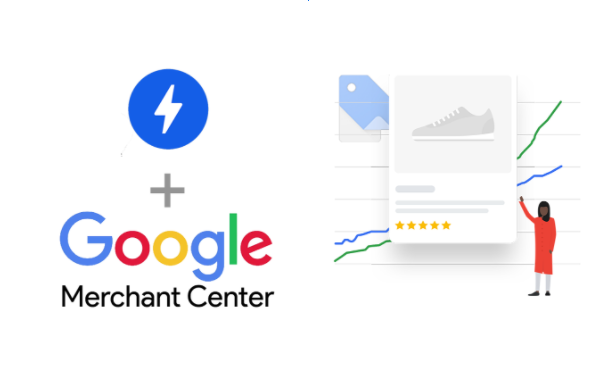There is always a space for more purchases to be made. Any popular eCommerce shop follows this mantra. However, in order to increase revenue, you must increase your marketing efforts.
Read on whether you’re stuck for suggestions or just need some motivation. This year, we’ve put together a list of twelve strong eCommerce marketing strategies for you to test.
01. Google Shopping Advertisements
One of the most common strategies would be to use the Google Shopping Ad Network, which displays users items relevant to their Google searches—and when that user clicks on an object, they will be routed directly to the vendor’s site.

According to Gil Gildner, co-founder of Discosloth’s search marketing firm, shopping advertisements are particularly narrowly targeted and are “one of the simplest and cheapest way to achieve greater product-sales to an e-commerce business.”
This is because they effectively anticipate prospective customers through displaying the picture of the product and the cost, so marketers can only get highly targeted clicks.
On platforms like Shopify or Woo Commerce, this is incredibly simple to incorporate.
02. Make voice search a priority.
In 2021, voice search may be the most common eCommerce marketing strategy.
If more people use voice to search for items, brands that tailor their content for these words will have a major competitive advantage for organic search traffic.

The main issue is that there aren’t many resources available for analyzing common voice search words. This should be an ideal opportunity for ecommerce marketing and local businesses to leverage on lengthy keywords without unnervingly forcing them into their content.
For companies that are wary of voice technology, SMS and push notifications, which often have high open rates, are another viable interaction choice. Brands will stand out since not many advertisers are using it yet.
03. Pay attention to the site’s speed.
Ecommerce companies would want to make sure their websites are up to par, including site speed, header tags, and interactive content.
If you get these things right, your site’s exposure and click-through rates can skyrocket.

When a website’s load speed improves, good things happen, like an improvement in the brand’s online eCommerce page’s efficiency.
Google will boost the page’s speed score in their paid Google Ads account, which will boost the page’s ranking in search results for related keywords. According to a Google report, raising the load speed from 1 to 5 seconds increases the bounce rate by 90%.
04. Produce a large number of appropriate videos
In 2021, eCommerce brands that build YouTube channels with videos that address important questions to a specific consumer base are predicted to win. These videos help a brand’s on-page time increase by over a minute per page.
Since Google appears to organically place related videos higher on the first results list, YouTube can help drive traffic and sales, making it a more cost-effective approach than PPC.
05. Advertisement on podcasts
You have found some buyers and a few ideal target customers if you are like most eCommerce brands.
What are those people interested in besides buying your products? What are their favorite pastimes? What are their ages? What piques their curiosity and ignites their passion?
Many of these demographic characteristics correspond to the niche audiences of podcasts. Develop promotional deals with podcasts that your target customers are likely to listen to. Alternatively, you should hire a podcast advertising firm to find the appropriate podcasts for you.

Related Post: Marketing Strategy for e-commerce Start Up
06. Optimize your product pages for search engines.
If we didn’t include SEO in our list of eCommerce marketing strategies, we’d be remiss. SEO is an important component of eCommerce digital marketing, and it all begins with your product pages.
Make sure that each of your product pages contains the following information:
- Using keywords in your title tag and meta description to entice searchers to click on your search link.
- Several product photos, each with alt text containing your target keywords
- A keyword-rich product description
- A keyword-rich URL
- Product schema with price, availability, and rating details to improve your visibility in Google search.
- Details about a product in the search results
07. Clear buyer concerns on product ratings
Is there anything more you could add to those product pages? Customer feedback. These will significantly improve the conversion efficiency. Have a look at the following numbers:
Adding ratings of higher-priced brands boosts conversion rates by almost 400 percent.
Sales increase by 18% as a result of reviews.
If a product has feedback, 71% of consumers claim they are more confident buying it.
Before making a purchase, 95% of people read reviews. If you don’t have them on your pages, they’ll go somewhere to find them (and, in the meantime, they could shop elsewhere as well!)
Utilize input tools to increase the number of ratings you get and then apply them to the product pages.
08. Using filters and QR codes to your advantage.
Ecommerce brands can create new shopping experiences by using filters on social media sites like Snapchat and Instagram. This includes Levi’s, which required Snapchat users to scan QR codes in-store to digitally try on a jacket that they could then purchase online, and Kylie Jenner’s beauty range, Kylie Cosmetics, which used Instagram filters to show users how her latest lipsticks looked.
QR codes in print advertisements, on the other hand, make it easy for customers to access advertisers’ websites.
09. Make an email signup form available on your website.
Here’s a simple one. Make a signup page for your email list on your website. Sticking these in your header or footer, where you advertise a nice 10% off discount for signing up, can be beneficial.
You may also have a popup box that shows as people visit your website.
10. Write newsletters and blog posts
Of course, you’ll need content. Lots of content. In 2021, guest blogging can prove to be a successful and cost-effective strategy.
You can identify the domain authority of sites using a feature like the plugin extension MozBar and only contact those with a domain authority greater than 40.

This is a tried-and-true method for getting high-quality backlinks to your homepage and increasing your domain authority [and hence your organic rankings]. Over the course of a year, long-form blog posts with informationalf guides will raise organic SEO by 2 to 3 times. Content that is well-written offers both new and current buyers an incentive to visit the eCommerce platform.
11. Issue coupons
Nearly one-third of online shoppers search for coupon codes almost every time they make an order, and this number is predicted to rise in the coming years.
Consumers are more knowledgeable about coupons when they discover them online rather than when they are handed to them. A third of customers would be irritated if a store failed to inform them of future discounts, and three out of five would request a refund if they discovered they had lost out on a sale after buying. Coupons would undoubtedly aid in the expansion of your client base.
12. Reward your long-term clients.
A profitable consumer is one that is faithful. Members in loyalty programs pay up to 18% more than non-members. It’s time to start a loyalty scheme if you don’t even have one.
Customer loyalty schemes today are complex. Customers will be rewarded with points that can be exchanged for dollar-off deals or free presents. You could give consumers free delivery, birthday discounts, or special gifts if you don’t have the money for a points-based scheme. Alternatively, deliver special member-only rewards to grow the mailing list.
Note that testing is the perfect way to discover what fits best on the target audience. So, to improve the eCommerce funnel and increase revenue this year, test out these expert-approved marketing tactics!
